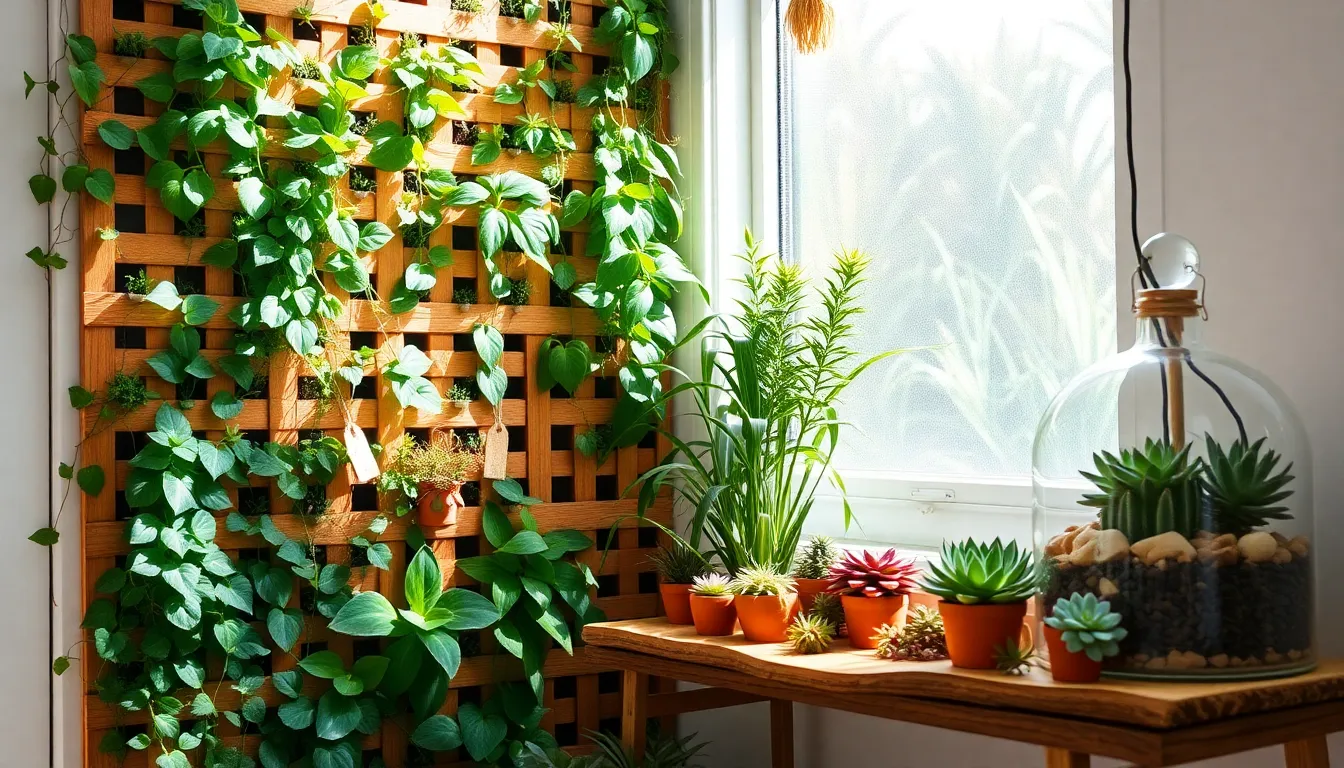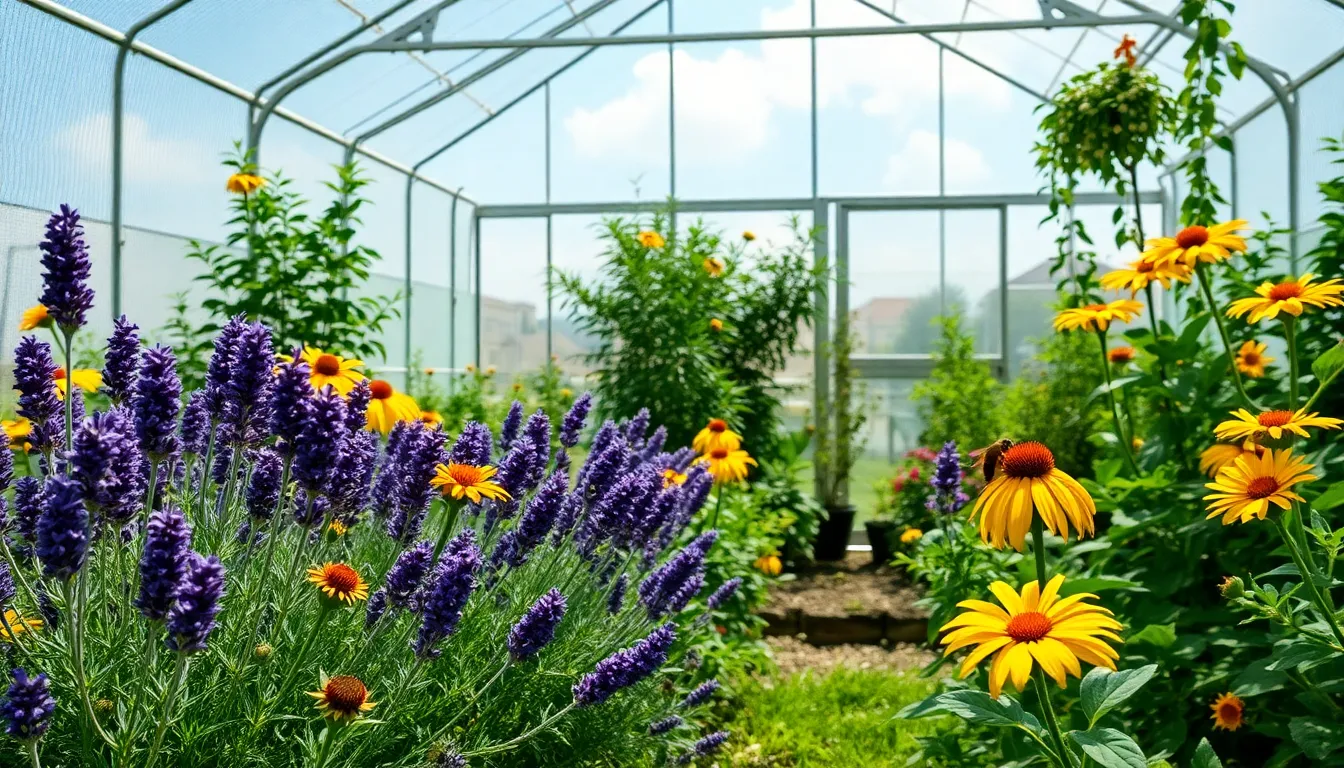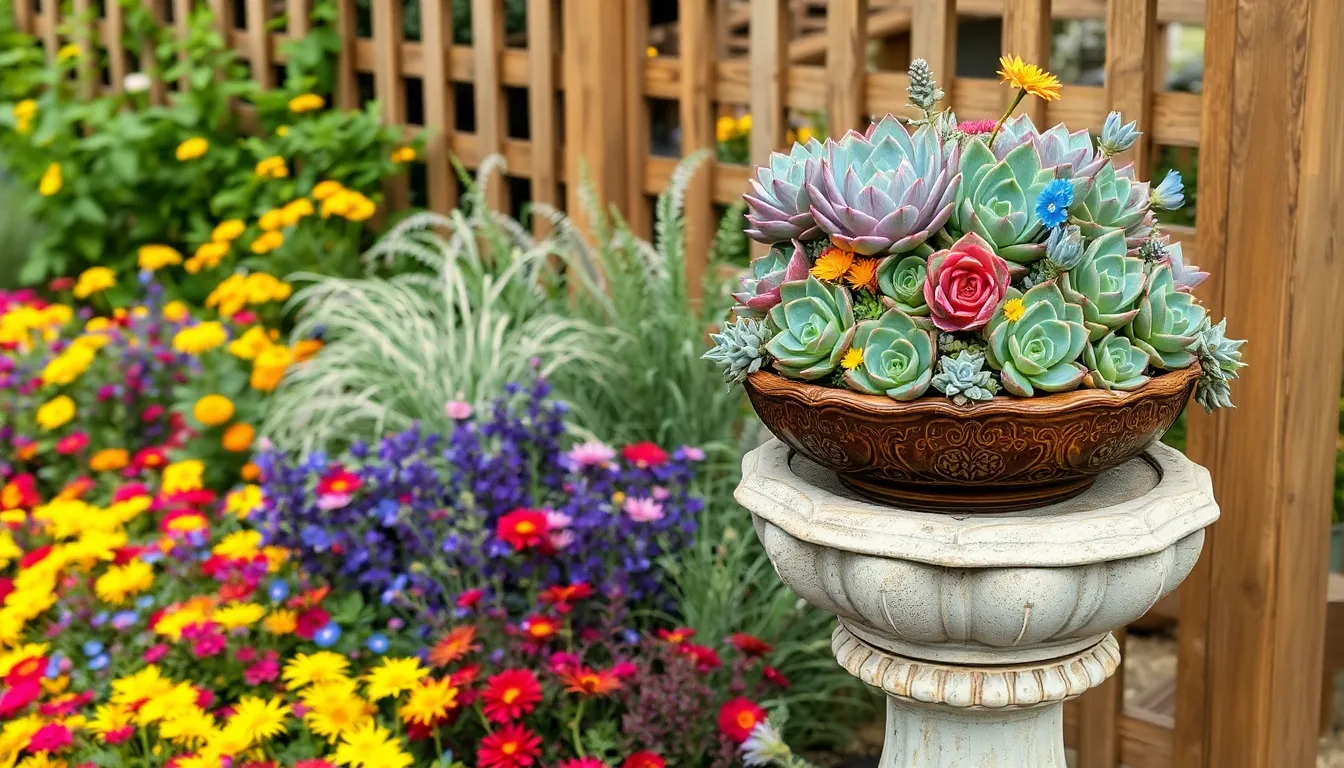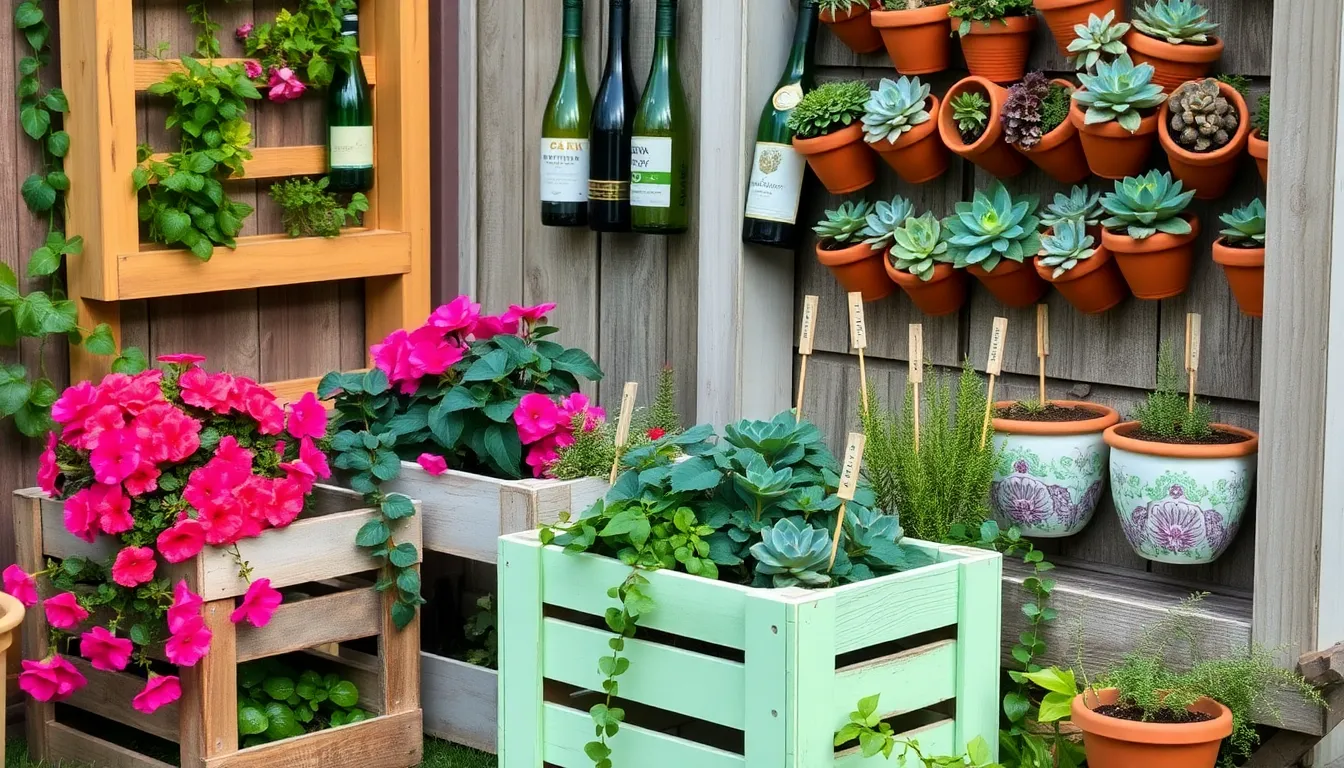Imagine stepping into your tiny home and being greeted by the vibrant hues and invigorating scents of your very own indoor garden. For both novice green thumbs and seasoned plant enthusiasts, “Indoor Garden Ideas for Tiny Homes” is your ticket to transforming limited spaces into lush, living sanctuaries. This guide celebrates the joy and rewards of successful gardening, even in the coziest of dwellings, by offering creative solutions that maximize every inch of your home.
Whether you’re looking to add a touch of greenery to your windowsill or create a vertical garden masterpiece, this guide provides valuable insights that cater to all skill levels. You’ll discover practical tips and innovative techniques that not only enhance your living space but also improve air quality and boost your mood. By the end of this journey, you’ll feel confident and inspired, ready to nurture your own indoor oasis and experience the profound satisfaction that comes from watching your plants thrive.
Choose Space-Saving Vertical Planters
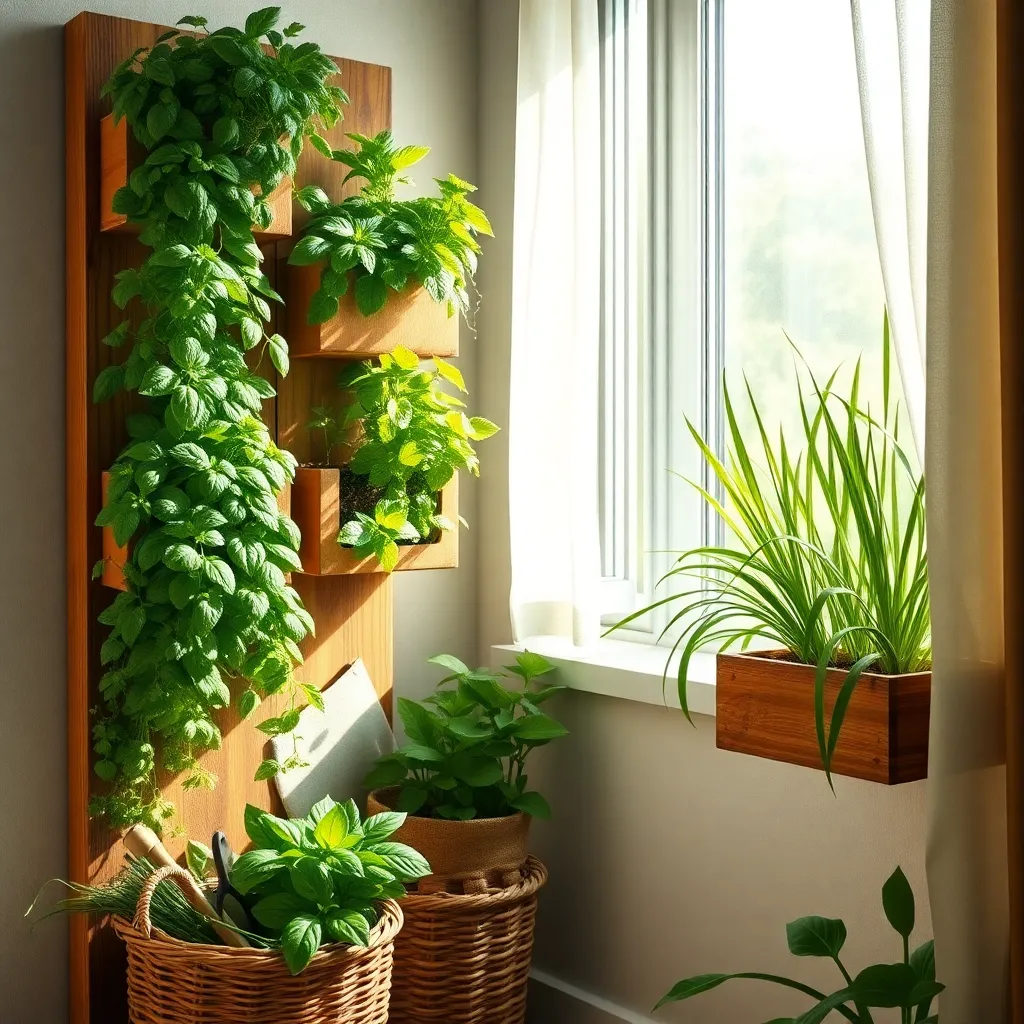
Vertical planters are an excellent solution for maximizing space in tiny homes. By using wall-mounted or hanging planters, you can transform any vertical surface into a lush, green space without sacrificing floor area.
When selecting vertical planters, consider materials that suit your aesthetic and are durable, such as weather-resistant metal or eco-friendly wood. Ensure they have adequate drainage to prevent waterlogging, which is critical for maintaining healthy plants.
For beginners, start with easy-to-grow plants like pothos, ferns, or succulents, which adapt well to vertical growing conditions. These plants require minimal care—simply water when the top inch of soil feels dry and provide indirect light for best results.
Advanced gardeners might experiment with vertical herb gardens, using planters that allow for deeper soil to support root growth. Consider using a high-quality potting mix enriched with organic matter to ensure herbs receive the necessary nutrients.
Utilize Multi-Level Plant Stands
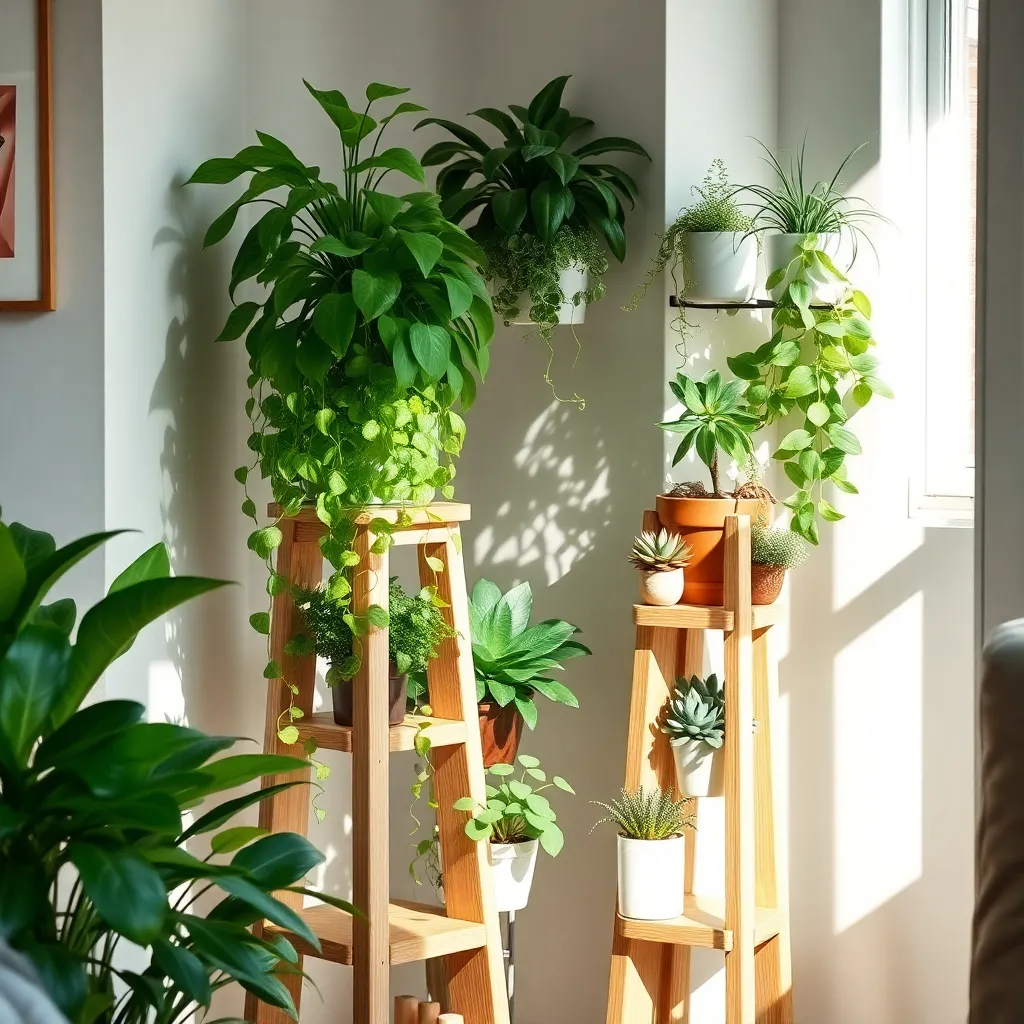
Multi-level plant stands are a brilliant solution for maximizing space in tiny homes while creating an eye-catching display. By elevating your plants, you can take advantage of vertical space, allowing more sunlight to reach each plant, which is essential for healthy growth.
Consider selecting stands made from durable materials like bamboo or metal to ensure stability and longevity. These materials not only add an aesthetic appeal but are also sturdy enough to hold heavier pots, giving you flexibility in plant choice.
When arranging your plants on a multi-level stand, place taller plants like fiddle leaf figs on the lower levels to create a cascading effect. This strategic placement not only enhances visual appeal but also ensures that smaller plants on higher levels receive ample light.
For optimal care, use a well-draining potting mix to prevent waterlogging, and make sure each pot has drainage holes. Watering needs will vary depending on plant type and indoor conditions, but a general rule of thumb is to water when the top inch of soil feels dry to the touch.
Incorporate Hanging Plant Baskets
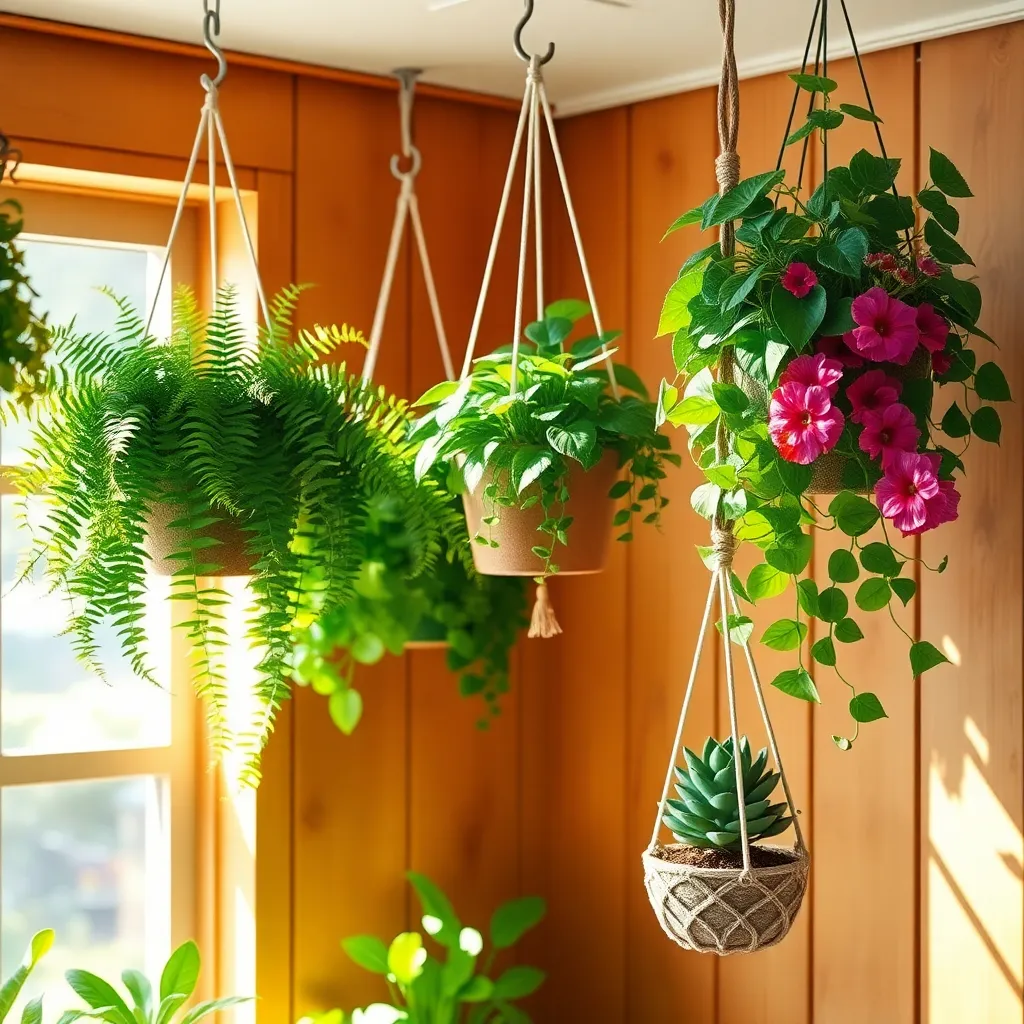
Hanging plant baskets are a fantastic way to maximize vertical space in tiny homes. By elevating your greenery, you can create a lush atmosphere without taking up valuable floor area.
Choose lightweight, trailing plants like pothos or spider plants, which thrive in hanging baskets and are easy to maintain. Both of these plants are perfect for beginners due to their low light requirements and minimal watering needs—typically once a week.
Ensure your baskets have adequate drainage by using pots with holes and placing a saucer underneath to catch excess water. For advanced gardeners, consider using a mix of potting soil and perlite to improve drainage and aeration, which helps prevent root rot.
Position your hanging baskets near windows where they can receive indirect sunlight. If natural light is limited, use grow lights to supplement; they are especially handy for enhancing plant growth in dimly lit spaces.
Opt for Low-Light Plant Varieties
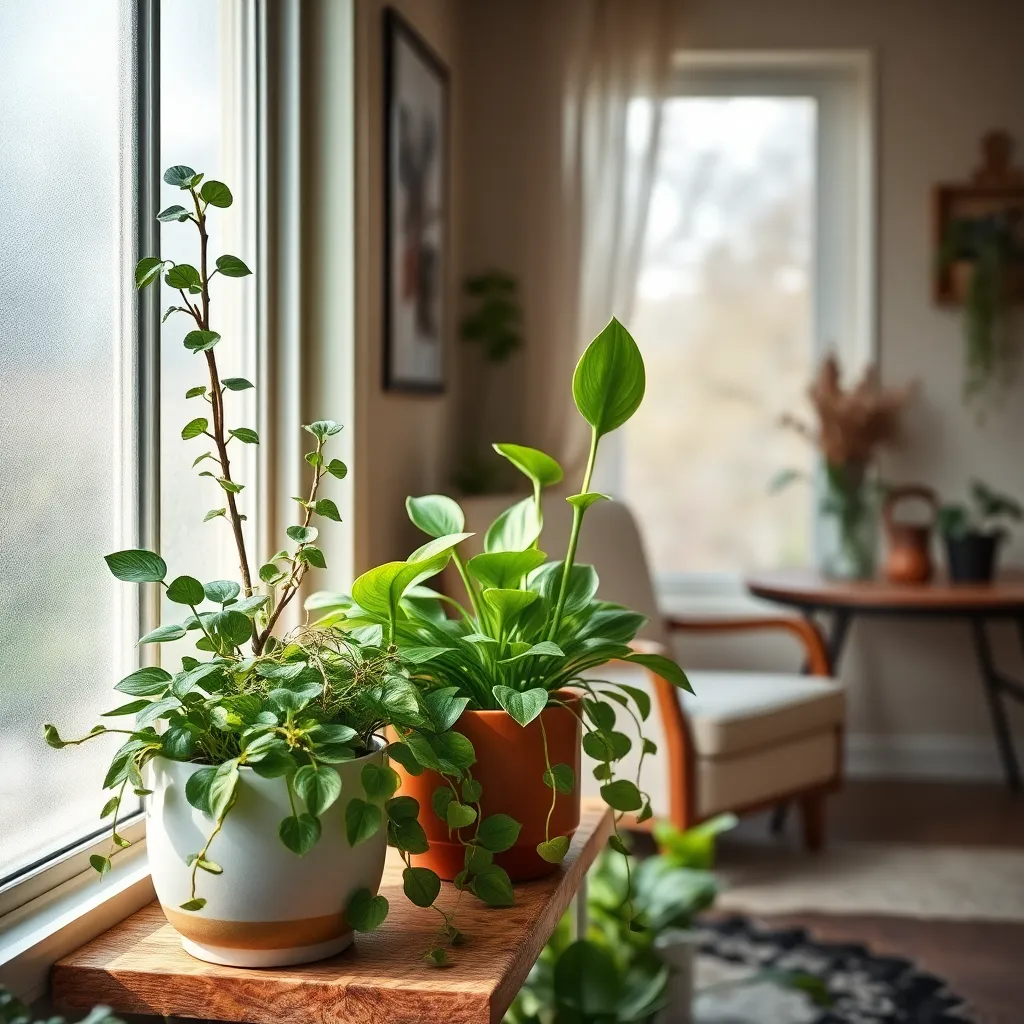
For tiny homes with limited natural light, choosing the right plants is essential to maintaining a thriving indoor garden. Opting for low-light plant varieties ensures your space remains lush and green without the need for constant sunlight exposure.
Snake plants are perfect for low-light conditions and are incredibly easy to care for. These plants require infrequent watering—typically every two to three weeks—making them ideal for busy lifestyles.
Another excellent choice is the ZZ plant, which tolerates a range of light conditions from low to bright indirect light. ZZ plants prefer well-draining soil and should be watered only when the top inch of soil feels dry to the touch.
Beginners may also try growing pothos, known for their resilience and adaptability. These plants thrive in low to moderate light and can even tolerate neglect, making them a forgiving choice for new gardeners.
For a touch of color, consider the peace lily, which not only flourishes in low-light environments but also purifies the air. Keep the soil consistently moist but not soggy, and mist the leaves occasionally to maintain humidity.
- Use a pot with drainage holes to prevent waterlogging, which can lead to root rot.
- Test the soil moisture regularly to ensure optimal watering schedules for each plant variety.
- Consider rotating plants periodically to ensure even growth and exposure to any available light.
Select Dual-Purpose Plant Furniture
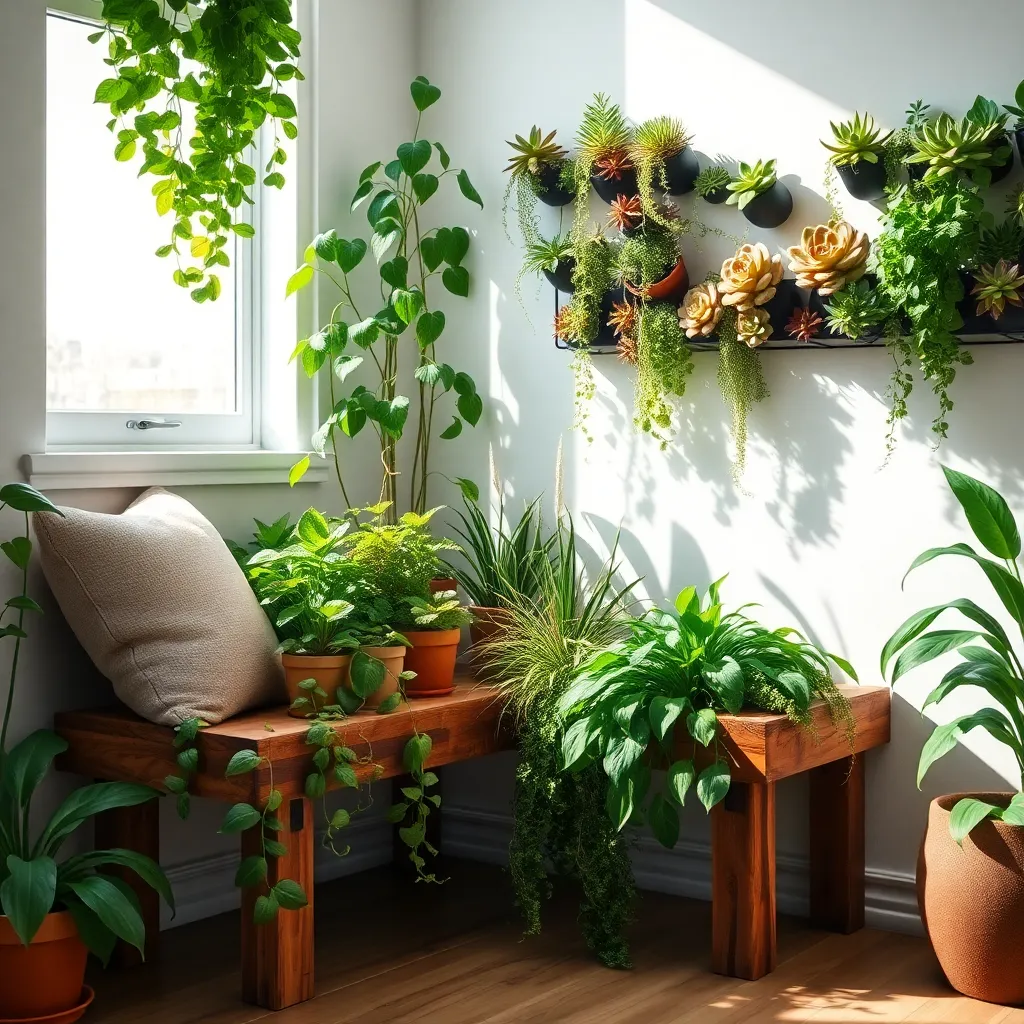
Incorporating dual-purpose plant furniture can maximize space in tiny homes while adding a touch of nature. Consider using a plant stand that doubles as a small table, allowing you to place items like books or drinks without sacrificing your greenery.
Choose materials that are moisture-resistant, such as sealed wood or metal, to ensure longevity. If you’re placing plants on shelves, ensure they’re sturdy enough to hold the weight of pots filled with soil.
For those with a more advanced skill set, creating a vertical garden on a wall-mounted rack can be both decorative and functional. This setup allows you to utilize vertical space effectively while keeping plants within reach for easy maintenance.
Remember to select plants that thrive in the specific light conditions of your chosen spot. Succulents or ferns can be excellent choices for low-light areas, while herbs like basil and thyme prefer brighter spots.
Watering frequency is crucial; most indoor plants prefer to dry out slightly between waterings. Use a moisture meter to check soil conditions, ensuring plants receive adequate hydration without risk of overwatering.
Conclusion: Growing Success with These Plants
As you explore the delightful world of indoor gardens for tiny homes, remember these five relationship concepts: nurturing growth together, finding shared spaces for creativity, embracing compromise, fostering patience, and celebrating small victories. These elements not only enhance your living space but also strengthen the bond you share with your partner.
To take immediate action, start by selecting a small corner in your home to cultivate a shared green space. Whether it’s a windowsill herb garden or a wall-mounted planter, let this project symbolize your commitment to nurturing both your relationship and your home environment.
For future inspiration and guidance, bookmark this article as your go-to resource. Saving this information will ensure you have a handy reference as you continue to cultivate your indoor oasis and your relationship.
As you embark on this journey, remember that the seeds of love and understanding you plant today will blossom into a thriving relationship tomorrow. Embrace this opportunity to grow together, turning your tiny home into a lush sanctuary of love and connection. Here’s to your flourishing relationship success!

